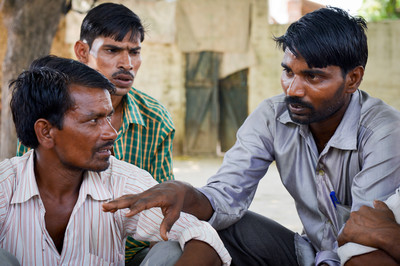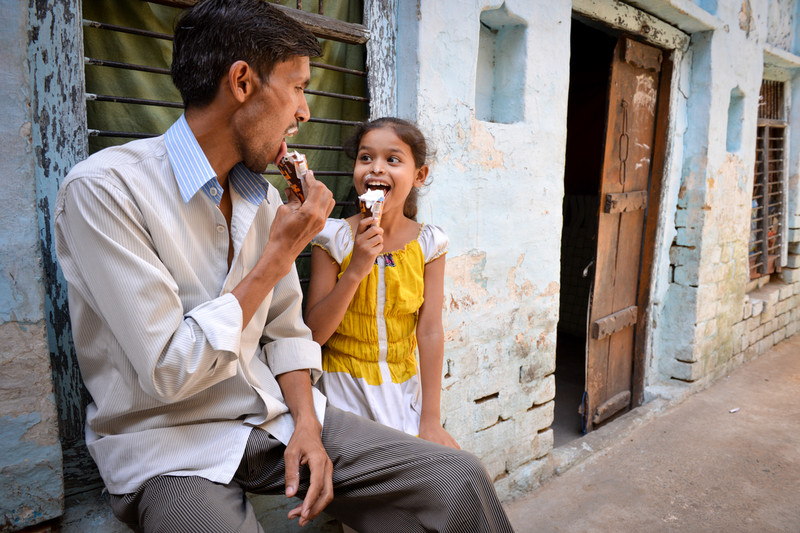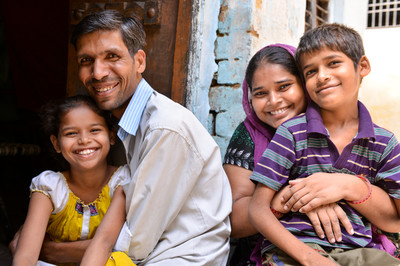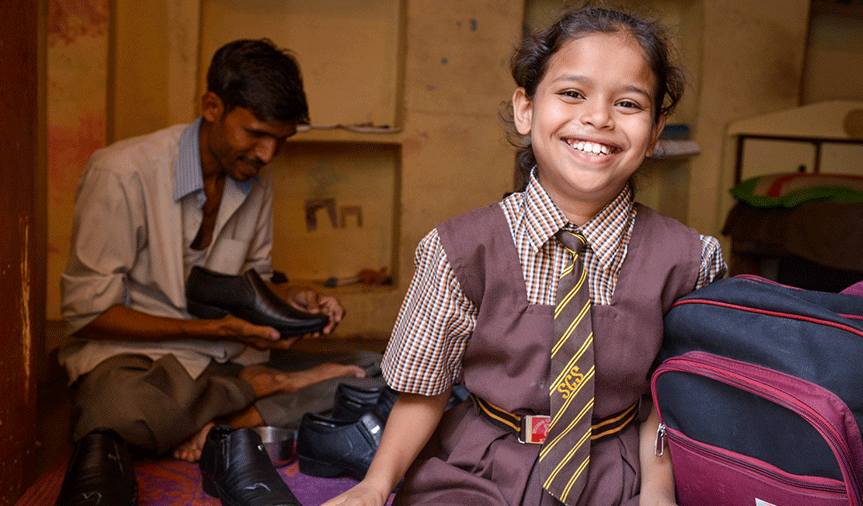A men’s group in Agra, India, is determined to turn the tide on a human rights violation common in their community and around the world: child marriage. Through a World Vision program, they are learning how to create a loving environment for their families and protect girls’ childhoods.
More than 700 million women alive today were married before age 18; 250 million were married by the time they were 15. UNICEF, the United Nations’ children’s agency, estimates that unless the trend is reversed, by 2030 there will be 950 million women who married before the age of 18.
Child marriage is most common in South Asia, including India, and sub-Saharan Africa’s rural and impoverished villages. Girls drop out of school when they marry young, limiting their lifelong earning potential and perpetuating a family history of poverty and abuse. They bear children before their young bodies are mature; both mothers and children are at high risk for sickness and death.
“Globally, evidence is showing that intentionally engaging men and boys around gender and power dynamics can significantly increase gender equity and reduce gender-based violence,” says World Vision child protection expert Matthew Stephens. “Whether in Latin America, sub-Saharan Africa, or Asia-Pacific, we’re learning that to be successful in addressing violence against children, we must engage men.”
Members of the Agra Men Care Group vow that the future will be different for girls in their community. Meeting in the shade of a neem tree (in the mahogany family), their talk turns to how they can save a young girl from a planned child marriage.
“Another case,” says one member, rubbing his forehead. The others exchange worried glances.

“It’s similar to Lalit’s daughter’s case, but this time it’s a widowed mother making the decision,” another member explains. The men know it’s time for action. The group’s leader, Jitender Singh, outlines a plan.
“I and a few men from the group will inquire about this family and the decision taken to marry their teen daughter,” he says. “Like we intervened in Rani’s case, we will speak to the mother of the girl and counsel her.”
Dowry: What’s a girl worth?
Rani* is a 15-year-old girl living in a nearby slum. Not long ago, her father, Lalit*, had been convinced that traditional child marriage was best for his two daughters. Rani was arranged to be married to her older sister’s brother-in-law. And if she married into the same household, he had to pay only one dowry. (*Last names omitted to protect identity.)
“This custom of dowry,” Lalit says, “has been prevalent for generations and we, being the girl’s family, have to give, no questions asked. We have to give in cash and [items] like TV, coolers, utensils. If we don’t give, then the family is ridiculed and shamed.” Dowries were outlawed in India in 1961, but the custom persists, and families go into debt to marry off their daughters.
Society’s skewed understanding of a girl’s worth — merely as a profit-and-loss venture — temporarily blinded Lalit. Then he met with the Men Care Group, a World Vision program that educates and equips Agra’s men on the inherent value of women and girls.

(©2014 World Vision/photo by Annila Harris)
Lalit came to understand that Rani is still growing and child marriage could cause health problems. Marrying later also allows Rani to stay in school and become better equipped to be a wife and mother. The Men Care Group also urged Lalit to teach his son the same values. They want to make sure the younger generation learns to value women and girls.
Members of the group support one another as they lead their families with empathy and encouragement. Other World Vision-sponsored groups equip adolescent girls and boys to be confident in themselves and supportive of both genders.

• Raising awareness of risks in communities and working with local leaders to create safer environments
• Providing support and recovery to exploited children
• Helping child laborers return to school
(©2014 World Vision/photo by Annila Harris)
As the meeting under the tree closed, the men are determined once again to convince a parent — this time a widowed mother — not to marry off her teenage daughter. Mangay Lal, a Men Care Group member, says the tradition of child marriage must be broken, and he’s doing his part to keep girls from bondage.
“We have been made to believe by society that a girl is someone else’s property and will marry, so why should we invest in educating her?” Mangay Lal says, glancing at his daughter, Mahima, playing in the distance.
“I never saw myself as having a friend-type relationship with my children, especially my daughter. There was no concept of taking the children out for leisure. No one did it in our community,” he says, seemingly surprised at the revolutionary turn his life has taken. “Being part of the World Vision Men Care Group has opened my eyes.”
Mangay Lal believed his role as a man was to bring money home, and that was all. He never considered what his children were eating, wearing, or playing. Now he’s found joy in participating in his children’s lives.
“World Vision came; they saw the darkness we were living in; they asked us to come to the light,” he says. “And that light is, with help of our understanding, creating a healthy environment where we care for our families and community and where our children — especially girls — can study to rise above and empower others.”


